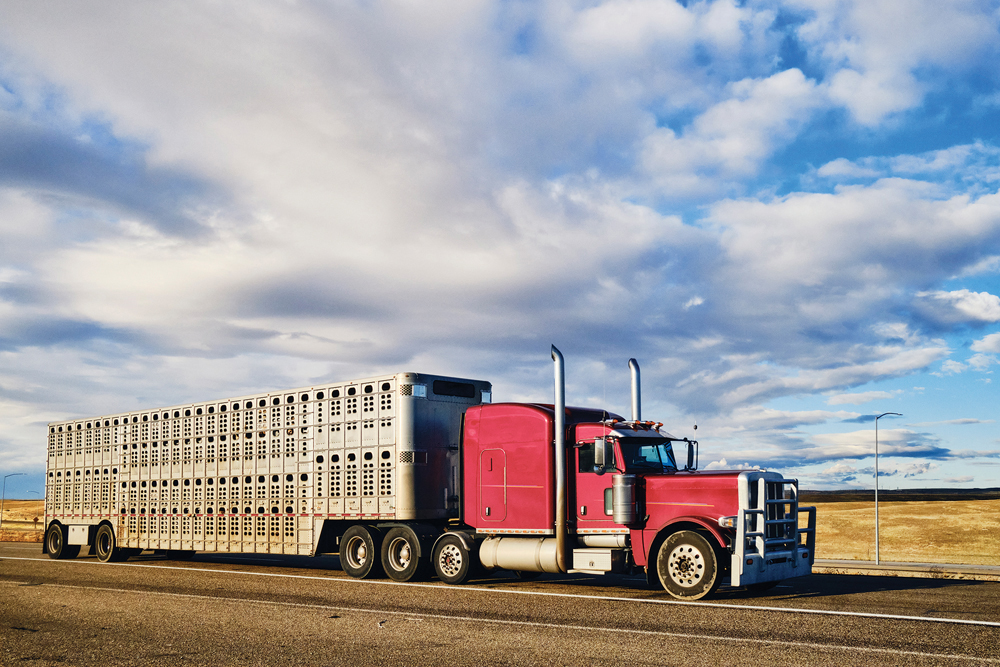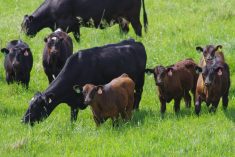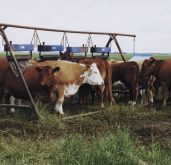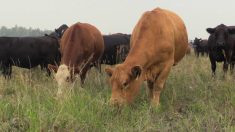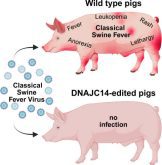The body responsible for updating livestock transportation codes says it needs more time than was allotted under the Canadian Agricultural Partnership.
The federal-provincial funding framework is slated to expire on March 31, 2023.
The National Farm Animal Care Council (NFACC) anticipated that it would need every bit of time available, given the scope of the project, said a recent update from the organization. As 2022 marched on, however, it became clear it could not deliver a finalized code by the time CAP funding expires.
Read Also

Lactanet moves to monthly on dairy genetic reports
Lactanet is now publishing monthly dairy genetic evaluations, giving dairy farmers more up-to-date data to make breeding decisions.
Among other challenges, the council cited delays from the COVID-19 pandemic.
“Initially, attention was focused on finding alternative means for completing this code,” a release from the NFACC said. “However, in recent months further challenges surrounding the lack of national lead organizations have led to concerns with proceeding to update the transportation code. It has become prudent to take stock of the issues being raised and consider alternative approaches for addressing humane transportation of livestock and poultry.”
The council said it will re-frame its work to complete a risk assessment and collaboration planning exercise, rather than a full code, to make the most of the work already done and lay out future plans.
“Additionally, transporters and intermediary site operators are key stakeholders who need to be more formally involved/engaged in a way that facilitates sector-wide inclusivity,” the council said, adding that the rest of the project will explore “viable options that can be operationalized with the broad support of stakeholders.”
Why it matters: Shifting transportation rules has been a lightning-rod topic particularly in the beef industry, where shortened maximum trip lengths can be a challenge to manage.
Updated transportation codes have been in the works since 2018 and were meant to work alongside new regulations from the Canadian Food Inspection Agency (CFIA). Those regulations were published in 2019 and technically came into force as of February 2020, despite criticism from industry.
Among other changes, the new rules shortened the maximum allowed haul times and increased mandatory rest times (now requiring cattle, for example, to have an eight-hour rest every 36 hours, compared to a five-hour rest every 48 hours previously.) New rules also added more specific language around feed and water. Similar changes were implemented for the shipment of other livestock, including swine.
At the time it was introduced, the CFIA said the new rules would improve animal health, lessen stress on animals and increase consumer trust.
The livestock sector disagreed. Cattle producers said the new regulations were not based on science and were not supported by the federal government’s own research. The Canadian Cattle Association (CCA) repeatedly pointed to a study of long hauls in Alberta, which found more than 99 per cent of cattle arrived at their destinations in good condition.
The CCA further argued that rules were being changed before ongoing research was complete and that more stops actually increased the risk of injury because accidents are more likely during loading and unloading. It also cited disease risk if more than one shipment of animals was unloaded for a rest stop in the same location.
The CFIA later announced a two-year grace period during which efforts would focus on education rather than enforcement. That grace period ran out earlier this year.
The beef sector again argued that rules adjustment should await the results of ongoing research about the transport of calves.
Initial data from a three-year study by Beef Cattle Research Council, Agriculture and Agri-Food Canada (AAFC) and the universities of Calgary and Guelph, suggested pre-conditioning calves was more effective than frequent stops. The project’s final report was expected this year.
The CFIA has since said the rules are being enforced but are not a priority for ruminant livestock hauls of less than four hours beyond the maximum, as long other wellness measures are still checked and animals are nine days old or more.
The agency, “is aware that research is continuing to look at transport times and FWR (food water and rest) stops for both unweaned dairy calves and older beef calves,” a CFIA representative said via email.
“It is important to note that, in addition to the prescriptive FWR time requirements, the regulations also contain FWR outcome-based requirements to verify that animals are not likely to suffer, be injured or die during transport.
“In accordance with these FWR requirements, animals are to be provided with feed, water and rest during transport to ensure they do not suffer from exhaustion, a nutritional deficit, and/or dehydration. The CFIA will continue to enforce these FWR outcome-based requirements,” the agency later added.
In early August, AAFC noted $2.9 million will be used by Animal Health Canada (of which the NFACC is a part) to update industry codes, including transportation.
Dr. Melanie Barham, executive director for Animal Health Canada, said those funds were part of monies announced five years ago.
The code for the care and handling of goats is largely complete, although no release date has been set. A comment period and subsequent summary has also been completed for dairy cattle.
“Under the funding, they’ve completed several other codes as well,” Barham said. “And then work on the transportation code is continuing.”
Local groups wait for transport code
Manitoba livestock groups say they are watching but are not seriously concerned about updated codes around humane animal transport, despite consternation the topic has caused in the beef industry.

The updated code, along with general species-specific codes, is in development with Animal Health Canada and its division, the National Farm Animal Care Council. The transportation code is meant to address changed regulations already handed down from the Canadian Food Inspection Agency (CFIA). Those regulations increased rest, food and water requirements for livestock on longer hauls.
Cam Dahl, general manager of the Manitoba Pork Council, said his organization has worked closely with Animal Health Canada on issues such as foreign animal disease.
“They’re sort of the umbrella for much of the African swine fever work, for example, so we’re really engaged with them,” he said.
Manitoba Pork is generally optimistic about the new transportation code, he said, although he admitted that, unlike the beef sector, hog shipments in Manitoba are rarely affected by the shorter haul lengths now proscribed by the CFIA.
Industry is already monitoring animal condition upon arrival at processing sites, he said.
“The overwhelming majority – and when I say overwhelming, the number I have is 99.9 per cent, so that’s virtually 100 per cent – of everything moving into processors meets the requirements that are laid out for the transportation of pigs,” he said. “This is something that we pay a lot of attention to.”
Carson Callum, general manager of the Manitoba Beef Producers, said the beef code of practice was due for a re-vamp in any case, even if the contested transport regulations are also reflected in the new codes.
“Overall, it’s not a bad thing to have a refresher,” he said. “We continue to see the impact of the changes to transportation regs, but some of the recent adjustments (have) made it a little more easy for transporters and producers to follow.”
The CFIA has said it will not target shipments that are within four hours of the new 36-hour haul limit, as long as other health measures are met and animals are at least nine days old.
That has been a significant boon for Manitoba producers, who by the nature of markets and geography, trend toward long hauls either west or east.
“It’s a good thing overall, but we’ll be keeping an eye on it as they develop to ensure that it doesn’t have any sort of detrimental impact,” Callum said.
The beef sector is also expecting recent research into the impact of transportation on beef and dairy calves to inform the code.
Cattle industry groups have repeatedly argued that ongoing pertinent research projects should be completed before new rules are established.
“The timing of that data that was produced by government and industry of condition of cattle on long distance hauls wasn’t quite finalized when some of these transport regs (were introduced),” Callum said.
Both the CFIA and government have indicated they will review data as it comes available “to see if adjustments are valid,” he said.
In late August, the National Farm Animal Care Council announced that it did not expect to complete the transportation code before funding through the Canadian Agricultural Partnership expires next year.


